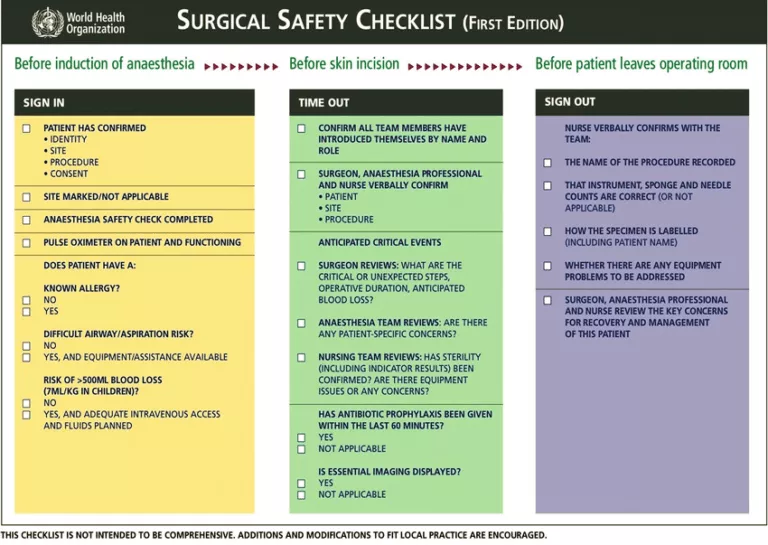
Whatever sector that a company is in, there are some legal obligations that it must meet. Rules ensure that organisations are acting in the best interest of consumers, employees and the public. For this reason, businesses have to ensure that they maintain regulatory compliance.
However, that is not always easy to accomplish. Industry regulations have increased dramatically in scope and speed. Enterprises have numerous rules to watch out for, and managing compliance is getting more complex.
Checklists are some of the tools that companies can use to ensure that they are not breaching any rules. Before you understand how checklists can help, learn some basics of compliance.
What is Regulatory Compliance?
Compliance with regulations is the practice of ensuring that a company adheres to established rules, regulations and standards in their industry. Businesses must make sure that they uphold particular standards to avoid legal implications.
Compliance failure can also endanger employees, the public and an organisation’s reputation. The losses incurred from compliance issues can cripple your whole enterprise.
Regulatory matters can be costly and time-consuming if not handled correctly. Therefore, companies try to find the best tools to help with the processes involved.
Why is Regulatory Compliance Important?
Why should enterprises worry about compliance, though? For one, it improves operations and safety in a company. ISO (International Organization for Standardization) guidelines, for example, ensure that a business is providing the best quality to consumers. So, getting international standardisation helps with quality management. Rules layout the safest ways for workers to handle certain duties. They reduce risks and boost efficiency.
Compliance leads to higher employee retention. Workers like to feel appreciated and that includes providing them with a safe environment. Protecting employees against harassment, workplace accidents and discrimination, among other issues, gives them reasons to stay. However, policies can only have these results if they are enforced properly.
Adhering to industry regulations contributes to brand trust. Consumers are inclined to trust you more if they know that your organisation is committed to their safety. You can use your compliance to sell your brand.
You will companies flaunting their compliance to ISO, PCI-DSS, environmental and other standards on their websites. The more trustworthy your brand is, the easier it is to attract new talent.
Why use Checklists?
Checklists have been proven to reduce deaths in hospitals by reducing mistakes in surgery along with reducing infections in hospitals, avoiding aircraft accidents and even getting rockets into space so they are perfect to help manage regulatory compliance.
Checklists force us into a structured approach to a task, think more carefully about actions, and systematically address processes and procedures even if we’ve done it numerous times before.
The Role of Checklists in Regulatory Compliance
A company is responsible for ensuring that it follows all the regulatory compliance rules. Depending on the industry, this could mean a lot of work. Checklists simplify that in several ways. One way they achieve that is by making it easier to prioritise. You can write down the most critical regulatory requirements in order of importance. Then the organisation can deal with them as necessary.
Document and Track Compliance: Putting your compliance checklist in writing provides evidence of your company’s intentions. In the instance that you need to review your compliance, you can go back to your list. Automated checklists have search features that make it easy to track activities.
Knowledge and Role Assignment: Checklists help to focus everyone’s attention where it matters. Each employee knows what has to be done, which reduces confusion. You can also use the tools to assign roles to different professionals. Therefore, if something goes wrong, you know who is responsible.
Response Planning: Writing down guidelines for specific conduct ensures that workers know what to do when certain situations arise. Rather than come up with responses on the fly during an emergency, a checklist guarantees that you have a plan.
How to get things right with a Checklist
Research carried out by Atul Gawande who published a book on checklists called “The checklist Manifesto: How to Get Things Right” after researching the benefits checklists can offer. He used information and data gathered from his research to develop the surgery checklist for WHO (World Health Organisation) to be used throughout the world.
He discovered that the discipline of following checklists helped increase communication amongst team members and can help guide professionals however knowledgeable or experienced they may be through complex processes and procedures. Ensuring important steps are not missed.

Research shows Checklists help with Compliance
There have been many studies that have focused on how a checklist can improve safety and compliance.
In 2013 there was another study on the effectiveness of checklists within medicine.
Conclusion of the study “Safety checklists appear to be effective tools for improving patient safety in various clinical settings by strengthening compliance with guidelines“
Science of Checklists research states “Given the huge impact that the proper usage of checklists can have on the quality of procedures in settings such as healthcare, manufacturing, aviation, and many more.”
Another research on improved compliance with checklists from the journal of patient safety concluded that written compliance was 100% more likely because people were marking items off a checklist even without understanding how and why it was needed to complete a process.
But even if we move away from academic research and the use within hospitals and the health industry. What about flying a plane, or taking a rocket into space? Well, both use a checklist to ensure that steps are not missed and are compliant with regulations and follow safety measures.
Nasa carried out research into checklists and monitoring in the cockpit. Identifying that “checklists and monitoring are two essential defences against equipment failures and pilot errors.”
Drafting a Compliance Checklist
Before writing guidelines, identify roles and responsibilities. Knowing what you need will help you put together the resources necessary for compliance like the right talent and tools. A good list should also include a reporting system s that you can track compliance violations. Incorporate your checklist with compliance software.
Regulatory compliance is a critical aspect of doing business. So, companies must work on being proactive rather than reactive to ensure that all aspects integrate compliance.
“How to get things right” use a Checklist